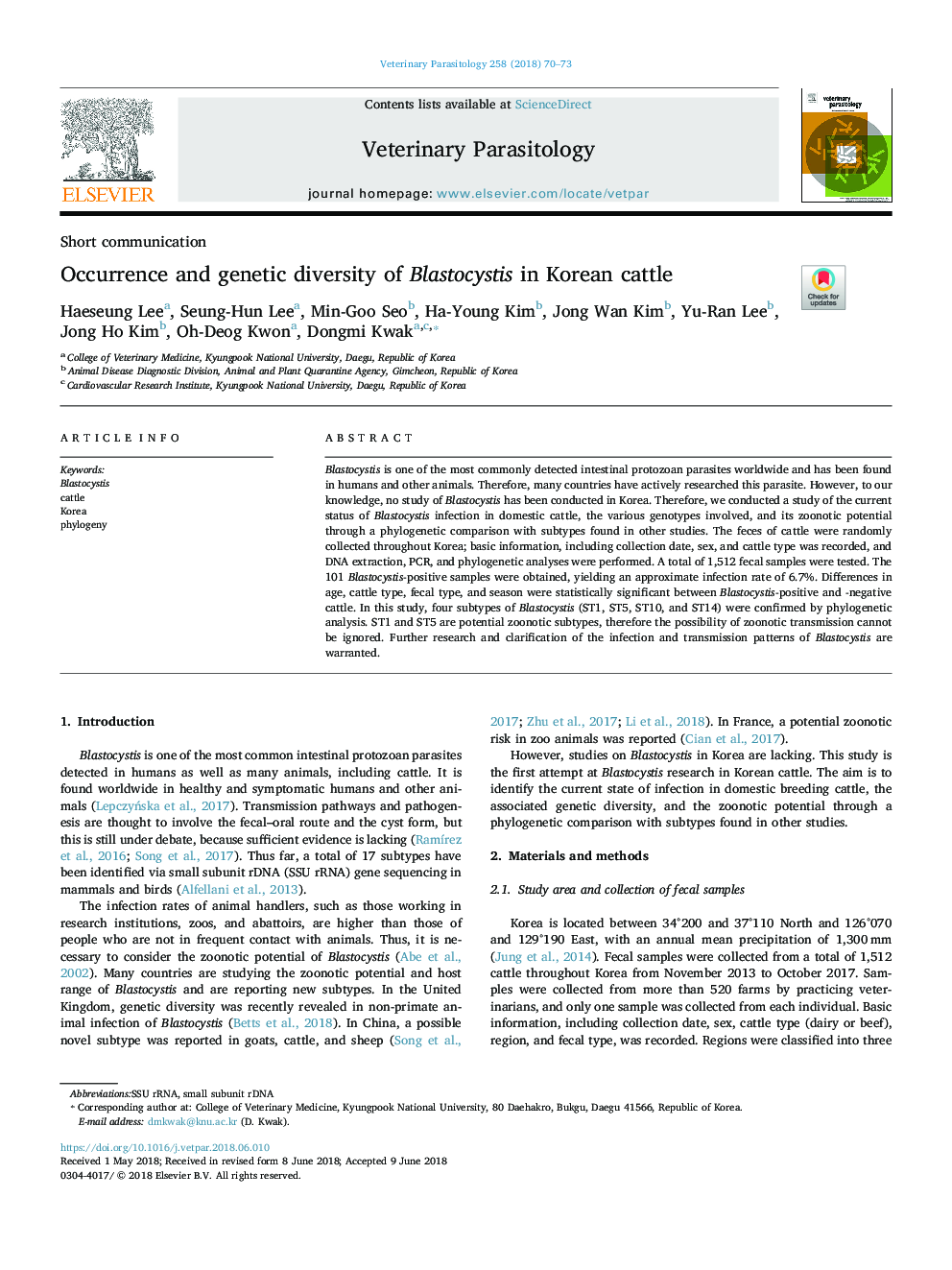| Article ID | Journal | Published Year | Pages | File Type |
|---|---|---|---|---|
| 8505931 | Veterinary Parasitology | 2018 | 4 Pages |
Abstract
Blastocystis is one of the most commonly detected intestinal protozoan parasites worldwide and has been found in humans and other animals. Therefore, many countries have actively researched this parasite. However, to our knowledge, no study of Blastocystis has been conducted in Korea. Therefore, we conducted a study of the current status of Blastocystis infection in domestic cattle, the various genotypes involved, and its zoonotic potential through a phylogenetic comparison with subtypes found in other studies. The feces of cattle were randomly collected throughout Korea; basic information, including collection date, sex, and cattle type was recorded, and DNA extraction, PCR, and phylogenetic analyses were performed. A total of 1,512 fecal samples were tested. The 101 Blastocystis-positive samples were obtained, yielding an approximate infection rate of 6.7%. Differences in age, cattle type, fecal type, and season were statistically significant between Blastocystis-positive and -negative cattle. In this study, four subtypes of Blastocystis (ST1, ST5, ST10, and ST14) were confirmed by phylogenetic analysis. ST1 and ST5 are potential zoonotic subtypes, therefore the possibility of zoonotic transmission cannot be ignored. Further research and clarification of the infection and transmission patterns of Blastocystis are warranted.
Related Topics
Life Sciences
Agricultural and Biological Sciences
Animal Science and Zoology
Authors
Haeseung Lee, Seung-Hun Lee, Min-Goo Seo, Ha-Young Kim, Jong Wan Kim, Yu-Ran Lee, Jong Ho Kim, Oh-Deog Kwon, Dongmi Kwak,
